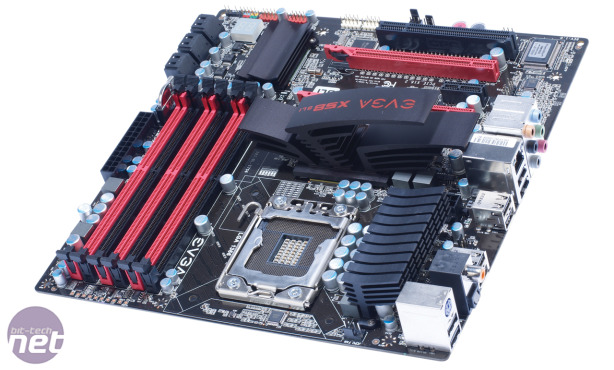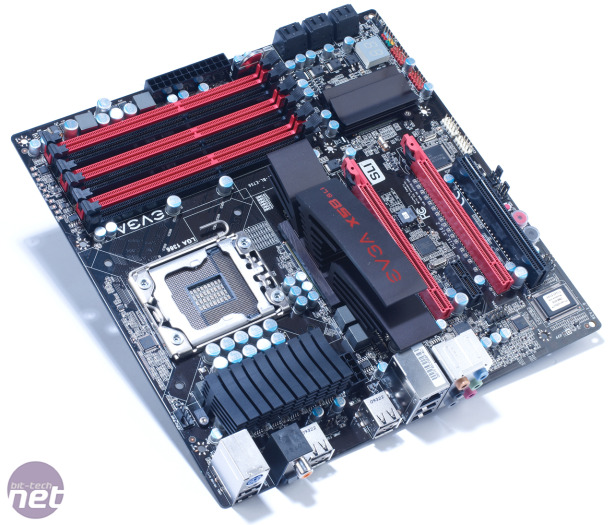EVGA X58 SLI Micro Motherboard Review
Manufacturer: EVGAUK Price (as Reviewed): £170.57 (inc. VAT)
US Price (as Reviewed): $207.99 (ex. Tax)
The EVGA X58 SLI Micro joins the growing ranks of micro-ATX motherboards that have been designed for enthusiasts rather than cost-conscious PC manufacturers and secondary markets such as Africa and the Middle East.
Despite its micro-ATX form factor, the X58 SLI Micro still has most of the features you’d expect to find on an LGA1366 motherboard. It has the same six DDR3 DIMM slots you’d find on a full ATX board, for example, as well as a sensible number of SATA ports (six).
However, these are all powered from the Intel ICH10R Southbridge, so they’re limited to 3Gbps, meaning that the X58 SLI Micro won’t be able to take full advantage of the new 6Gbps hard disks and SSDs that are about to appear on the market. At least EVGA has had the foresight to position the SATA ports parallel with the PCB, which aids neat cabling in your case.
Click to enlarge
You’ll also find a dozen USB 2 ports, two FireWire ports and a full set of analogue and digital outputs for the 8-channel on-board audio. The rest of the PCB is dominated by the four expansion slots: two 16x PCI-E, a single 1x PCI-E and one PCI.
This will be sufficient for most PCs, although the other two micro-ATX LGA1366 motherboards on the market – the Asus Rampage II Gene and MSI X58M – have a more capable 4x PCI-E slot instead of the 1x PCI-E slot.
The PCB layout also lags some way behind that of the Asus and MSI micro-ATX motherboards, which is principally due to EVGA fitting the X58 chipset with a large and ungainly heatsink. We suspect this has been designed with appearance rather than function in mind, as its shape and size makes it hard to install any CPU cooler without cutting your fingers. In fact, we barely managed to install our Thermalright Ultra 120 CPU cooler at all, as it pressed down on the top of the chipset heatsink, scratching its anodised surface.
What’s more, the 8-pin EPS12V power socket is very poorly positioned between the chipset and VRM heatsinks, so its cable has to stretch across the surface of the motherboard, restricting airflow. It’s not all bad though – there are power and reset switches on the PCB, along with a two-digit POST code display, which is always a useful feature when troubleshooting.

MSI MPG Velox 100R Chassis Review
October 14 2021 | 15:04











Want to comment? Please log in.